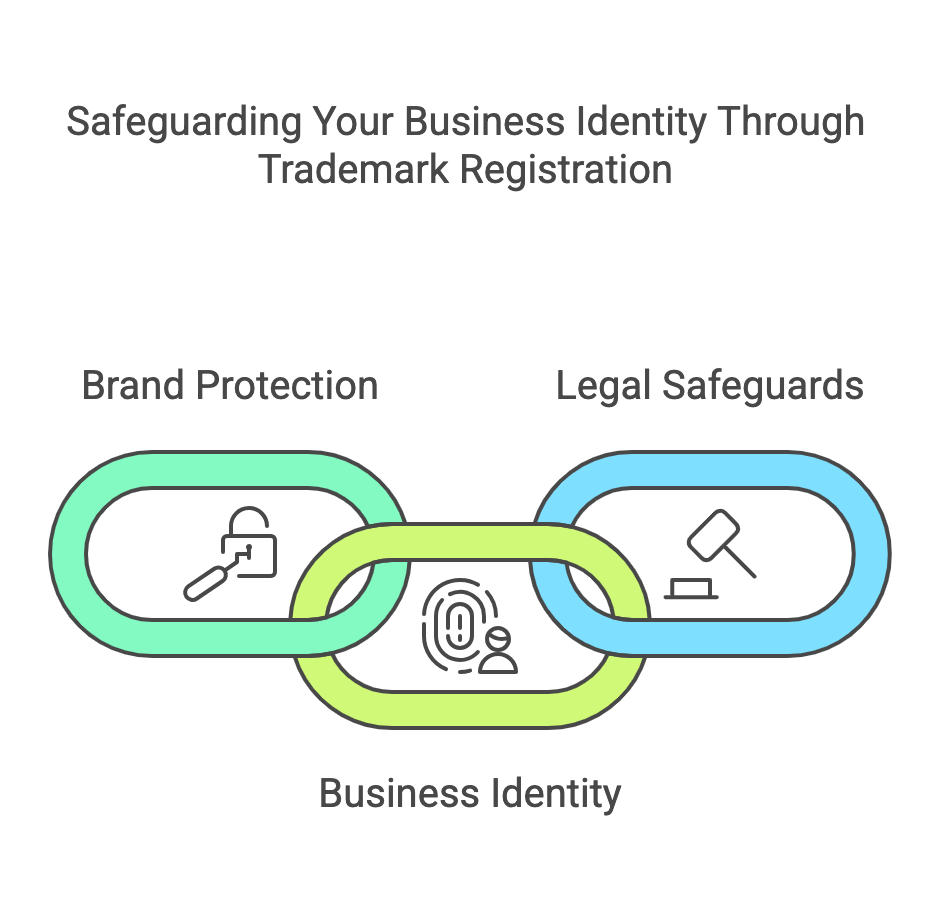Introduction to Trademarks
Starting a business is an exciting journey, but protecting your brand is just as crucial as building it. One of the most effective ways to safeguard your business identity is through trademark registration. But what exactly is a trademark, and why does it matter for small business owners? This guide will break it down for you.

Why Every Business Needs a Trademark
A trademark is a symbol, word, or phrase legally registered to represent a company or product. It ensures that your brand is unique and protected from competitors who might attempt to use a similar name or logo.
Key Benefits of Trademarks:
- Brand Protection: Prevents competitors from using similar names or logos.
- Consumer Trust: Builds credibility and recognition in the marketplace.
- Legal Advantage: Provides exclusive rights and legal recourse against infringement.
- Business Growth: Increases your company’s valuation and attractiveness to investors.
What Can & Cannot Be Trademarked
Understanding what qualifies for trademark protection is essential.
What Can Be Trademarked:
✅ Business names ✅ Logos ✅ Slogans & Taglines ✅ Product Names ✅ Unique Packaging (Trade Dress)
What Cannot Be Trademarked:
❌ Generic Terms (e.g., “Best Coffee”) ❌ Common Phrases ❌ Government Symbols ❌ Offensive or Misleading Marks
The Process of Registering a Trademark
The trademark registration process may seem daunting, but breaking it down into simple steps makes it manageable.
Step 1: Conduct a Trademark Search
Before filing, ensure your desired name or logo isn’t already registered. The U.S. Patent and Trademark Office (USPTO) website has a database where you can check for existing trademarks.
Step 2: Choose the Right Trademark Class
Trademarks are categorized into different classes based on the type of goods or services they represent. Picking the right class is crucial to ensuring full protection.
Step 3: Prepare & File Your Application
Submit your application through the USPTO website, providing all necessary details, including:
- Business name and contact information
- Description of goods/services
- Trademark specimen (evidence of use)
Step 4: Application Review & Office Actions
After submission, an examining attorney reviews your application. If there are objections (known as Office Actions), you’ll have the opportunity to respond and provide clarifications.
Step 5: Approval & Registration
Once approved, your trademark is published for opposition. If no one challenges it, you receive your registration certificate.
Common Mistakes to Avoid
Many business owners make costly mistakes when dealing with trademarks. Here are a few to watch out for:
🚫 Skipping the Trademark Search: Overlooking this step can lead to legal disputes. 🚫 Choosing a Weak Trademark: Generic or descriptive marks are harder to protect. 🚫 Not Monitoring Your Trademark: Regularly check for potential infringements. 🚫 Failing to Renew: Trademarks require periodic maintenance and renewal.
Final Thoughts & Next Steps
Registering a trademark is a crucial step in building a strong brand. Whether you’re launching a new business or protecting an existing one, securing a trademark can save you from costly legal battles in the future.
💡 Need help with your trademark? Contact our experts for a free consultation and ensure your brand is legally protected!

